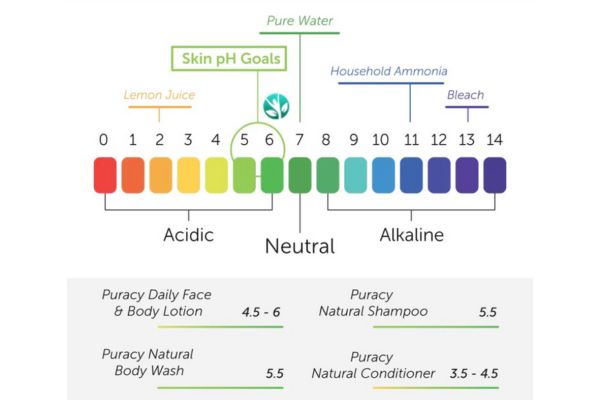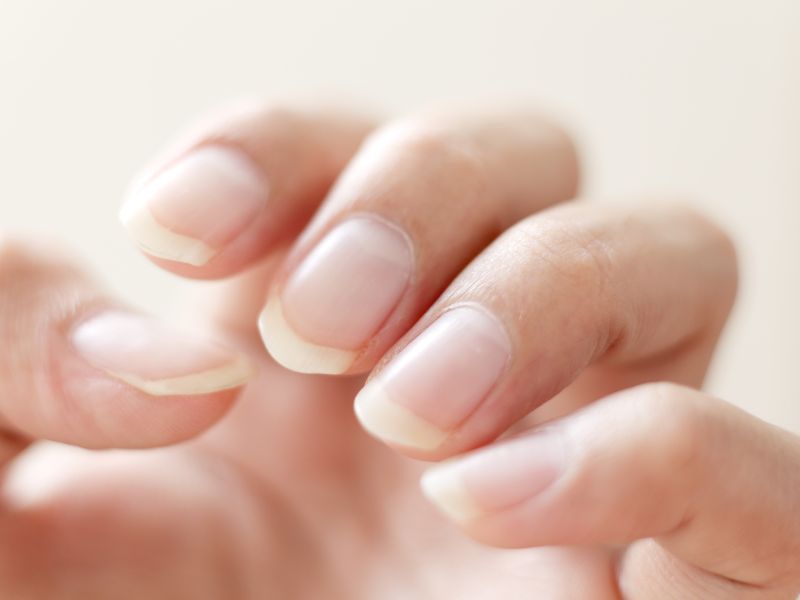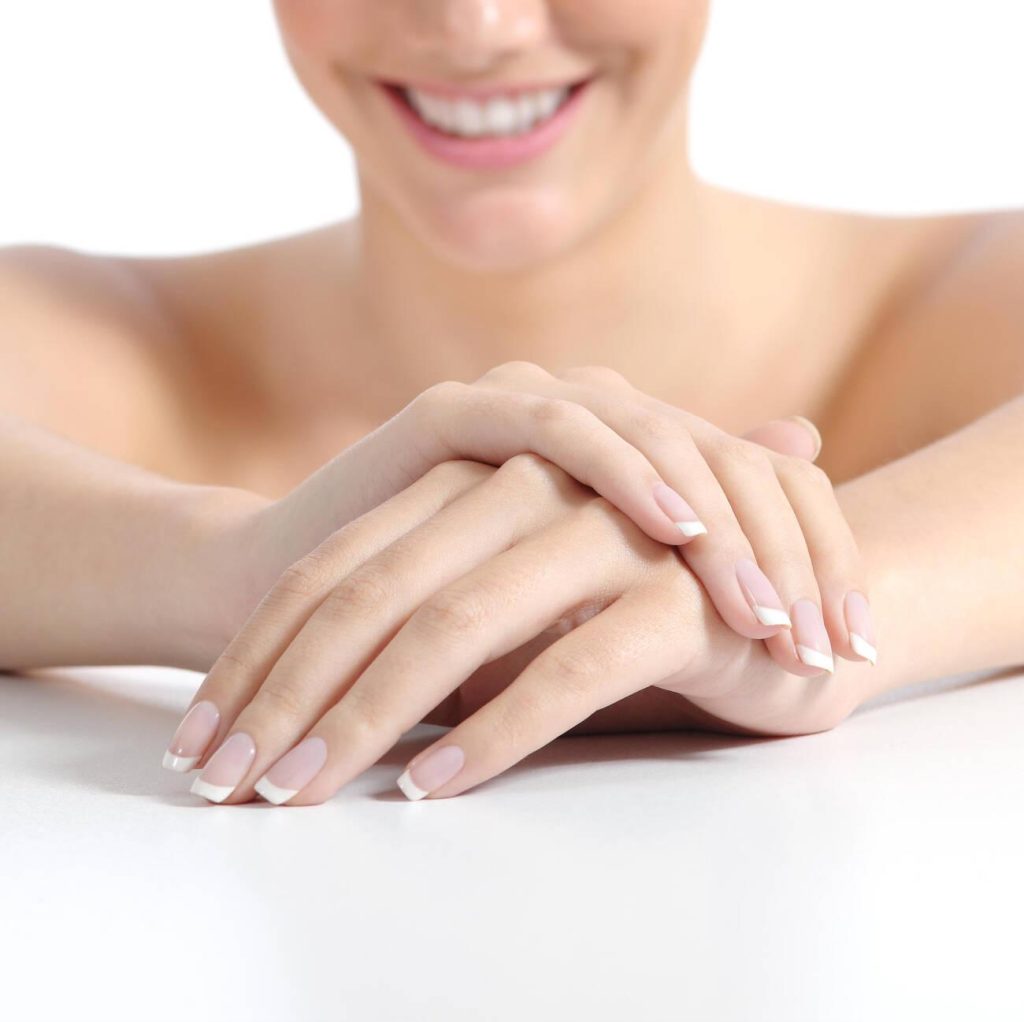pH of skin and nails, which is the abbreviation for hydrogen potential, is the value that tells us the concentration of hydrogen ions [H]+ present in a solution. That is, it is a unit of measurement that tells us the degree of acidity of a solution .
pH values vary on a scale from 0 to 14. Thus, we have a neutral pH when its value is 7, if it is less than 7 it is acidic and if it is higher it will be a basic or alkaline pH. Therefore, the pH value is extremely important for the care of our skin.

The skin, our largest organ, has the main function of acting as a defence barrier against the environment and infections. Therefore, having the correct pH is essential for its proper functioning and to protect us against possible infections.
To protect us, the skin’s outer surface is covered by the so-called acid mantle , a mixture of water and lipids formed by fatty acids. And as its name indicates, this mantle is what provides acidity to the skin, which generally has a pH close to 5.5. (Source)
changes pH of skin and nails
The pH can vary slightly depending on the area of the body, being more alkaline in some areas, which makes them more vulnerable to external aggressions.

If the pH value rises and becomes more alkaline, the balance is disturbed, skin enzymes lose their activity, the skin loses water, dries out and cannot form the lipids it needs. As a result, the skin’s barrier function is altered, leaving it less protected against infections, itching may appear… If the pH drops and becomes too acidic, inflammation and redness of the skin may occur.
How to check the pH of your skin and nails
Anything that comes into contact with the skin can affect the pH balance: cleaning products, skin care products, pollution, water, sun, tobacco smoke, etc.
Cleansing products (soaps, shampoos, gels, etc.) are generally neutral or basic and their use affects the pH of the acid mantle, making it alkaline. After using an alkaline cleansing product, it takes between 2 and 12 hours to regain equilibrium. Therefore, our skin needs mild cleansing products with an acidic pH so as not to weaken the acid mantle.
In summary: When you soap too much, you cause the hypodermis, a slightly acidic tissue that lubricates the skin and protects it from bacteria, irritation and/or other external aggressions, to lose its acidity. This will cause the skin to become more alkaline and more exposed to bacteria.
That is why you have to be careful with the products you use in the bathroom: those with a pH below 6 or above 8 alter the normal pH values of our skin. However, you should not forget that depending on the type of skin you have, the pH values will vary.
Ph of different skin types
Normal skin : pH ranges around 5.50. This is the least common and is characterized by a velvety appearance, without wrinkles, pimples or blackheads.
Oily skin : tends to be alkaline, without acid defense and therefore more exposed to bacteria and external agents. It has an oily appearance due to excess production of oils in the sebaceous glands. It is a skin with acne, dilated pores and pimples.
Dry skin : This is skin that is drier than usual. It has a rough appearance to the touch and suffers from fine wrinkles in adults.
When we are born, we have a pH of 7, which decreases over the years. When we reach adulthood, the pH is between 5.50 and 6.
what happens with your nails?
Nails have a slightly acidic pH value. Studies have determined that the pH value of the nail plate is around 5 , and is significantly higher for toenails. This prevents them from becoming too oily. However, if their pH value tends to be too alkaline, they will become overly oily.
This excess production of oil is what causes many nail polishes, gels and other systems to not adhere optimally to the nail, leading to lifting.
Using a pH regulator
To counteract the problem of nails with alkaline pH, we use the pH regulator, also known as a dehydrator , an essential step in the preparation of any manicure that involves the application of nail polish, gel, etc.
If the nail surface is pH balanced, it will significantly improve the adhesion of basically any nail product, such as: gels, acrylics, nail adhesives, tips, nail decorations, base coats, nail polishes, etc.
This solution acts by removing excess oil and other contaminants from the surface of the nail, slightly raising the pH and allowing for better adhesion.
Knowing this, we will better understand how our skin works, the importance of the nail’s pH and thus avoid possible adhesion problems of the different nail polish systems.
How to balance skin pH
Below are a few ways to help maintain healthy skin and balanced skin pH.
Wash with gentle cleansers
Whether gentle for you means using a specially formulated commercially made face wash or cleaning your skin with DIY natural or plant-based items, remember that water affects your skin too, even if momentarily.
More alkaline facial cleansers may makeTrusted Source your skin more prone to irritation.
More acidic cleansers may help combat acne, which may clear up once your pH levels reach below 6. More acidic-based skin care ingredients may also helpTrusted Source maintain healthy skin in conditions such as eczema and psoriasis.
Look for products with a pH of 4 or lowerTrusted Source to help maintain your skin barrier. Not all products list pH, but some do.
Conclusion
Skin pH is one important factor in maintaining healthy skin. Using a cleanser and moisturizer suited to your skin type helps maintain the right balance of oils, keeping your skin in its best condition.

